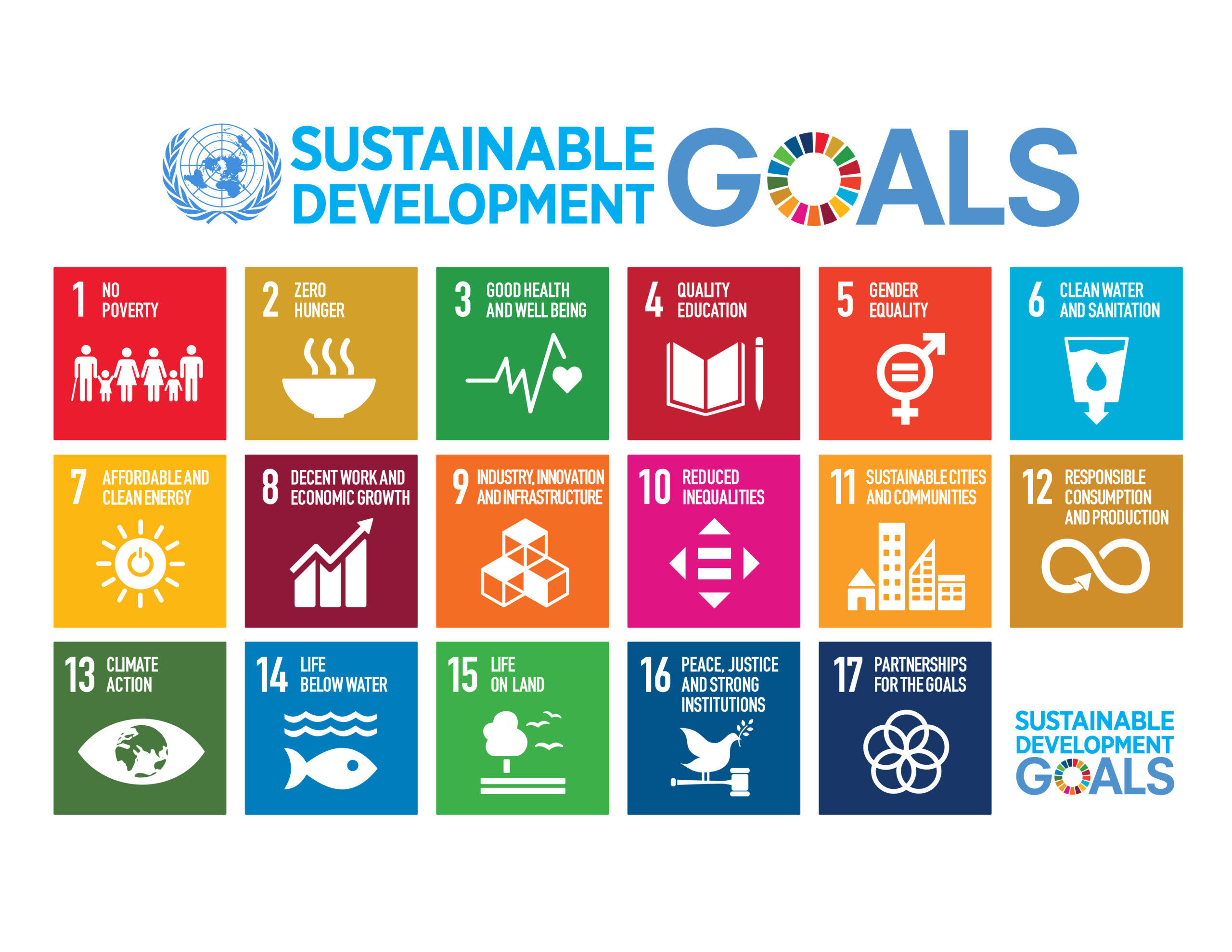The SDGs
Not only in communication, but also in all areas of daily operations, we try to implement the SDGs (Sustainable Development Goals) of the United Nations. Some play a smaller role in the company/environment, some a bigger one. Nevertheless, it is important for us to track all 17 goals and take measures that promote these goals. We place every sustainability measure directly in the context of the SDGs and also focus on the IDGs (Inner Development Goals).
Therefore, with every entry on the Wall of Change, you will find information about which SDGs are being pursued with the measure.
The SDGs at a glance
The 17 SDGs (Sustainable Development Goals) were adopted by the UN as part of the 2030 Agenda. With the 2030 Agenda, goals for the future were set to ensure a decent life for everyone and at the same time to secure the natural basis of life for the future. This involves social, economic and ecological issues that all states should implement. (*Since we act as a hotel and not as a state, we break down the goals down to us as a company.)
SDG 1:
No poverty: The first goal requires the drastic reduction of poverty. It is the basic requirement for the fulfillment of all further goals.
This goal goes hand in hand with climate change, because poorer people in particular need to be supported in adapting to its consequences. In addition, the entire economy depends on an intact ecosystem.
SDG 2:
No Hunger: World hunger should be ended. The producers should be guaranteed access to productive resources. In addition, productivity and yield are to be increased through agricultural methods. The basis for this goal is sustainable agriculture.
SDG 3:
Health and well-being: The goal of SDG 3 is to maintain and restore health and prevent premature death. More value must be placed on environmental protection in order to reduce (health) environmental pollution (health-related environmental protection).
SDG 4:
High-quality education: All people should have equal access to high-quality, technical, vocational and university education. Sustainable educational offers are also needed so that future generations can help shape (practical) and react to challenges.
SDG 5:
Gender equality: The aim here is equal participation and equal opportunities for all genders. All discrimination against women and girls must end.
There is a significant link between environmental change and gender-based violence. This must be counteracted, among other things, by environmental protection.
SDG 6:
Clean water and sanitation: SDG 6 is an international goal. Access to clean water and sanitary facilities should be guaranteed for everyone. In addition, there is a focus on water protection. The aim is long-term water availability, high water use efficiency and the promotion of water resource management.
SDG 7:
Affordable and clean energy: By 2030, everyone should have access to affordable, reliable, sustainable and modern energy supplies. The proportion of renewable energies must be increased significantly and energy efficiency increased. Environmental and natural compatibility must be guaranteed for all energy development measures.
SDG 8:
Decent work and economic growth: SDG 8 is about shaping a sustainable economy. This should both ensure social prosperity and be accessible to all people. Resource efficiency in consumption and production is to be increased by means of technical modernization and innovation This should ensure a decoupling of economic growth and environmental consumption.
SDG 9:
Industry, innovation and infrastructure: The aim is to achieve sustainable and resilient infrastructures. Industries should increasingly rely on or develop environmentally friendly processes, resource efficiency and cycles as well as clean technologies.
SDG 10:
Fewer inequalities: All people should share in prosperity and there should be a fairer distribution of income. Everyone should have the same opportunities and be able to live independently. Social and political inclusion should be promoted. In addition, environmental pollution must be reduced and access to green and open spaces improved. Prices must be set in such a way that everyone has access to sustainable consumption.
SDG 11:
Sustainable cities and communities: The goals here are a more sustainable design of urban development, settlement planning and transport systems. The environmental pollution caused by cities should be reduced, access to open and green spaces and to sustainable transport systems should be secured. Greater resource efficiency, mitigation of climate change and disaster resilience are sought. Urban and rural areas should be better connected. Less space and resources should be used and green spaces should be upgraded. Green roofs, facades, water surfaces, shading contribute to more sustainable cities and should therefore also be in focus.
SDG 12:
Sustainable consumption and production: Consumption and production must take place under ecological conditions. Accordingly, consumption and production must be changed in the form of circular economy, sustainable supply chains and avoidance or responsible disposal of waste. Food waste is to be halved by 2030.
SDG 13:
Measures for climate protection: This goal directly affects climate protection and adaptation to the consequences of climate change. In addition to CO2 reduction, education, sensitization and capacity building for adaptation to the consequences of climate change are to be promoted. In addition to CO2 reduction, education, sensitization and capacity building for adaptation to the consequences of climate change are to be promoted.
SDG 14:
Life below water: The major goal of SDG 14 is to end pollution of oceans and seas. In addition, the acidification of the waters is to be reduced, the sustainable management of coastal ecosystems and the sustainable handling of fish stocks are to be expanded. Another goal is the establishment of marine protection areas.
SDG 15:
Life on land: SDG 15 focuses on the protection, restoration and sustainable use of ecosystems at national and international level. The loss of biological diversity should be stopped and species protection promoted.
SDG 16:
Peace, justice and strong institutions: SDG 16 is about securing, developing and restoring peaceful, rule of law and inclusive societies. The goal is to have effective, accountable and transparent institutions. Climate and environmental policy are very important in order to avoid climate and resource conflicts.
SDG 17:
Partnerships to achieve the goals: SDG 17 focuses on cooperation between states. Nordic states should support southern states. Environmental policy should also get involved in international partnerships.
SDGs: 4, 13, 17
Implementation period: 2019
Partner: UN



